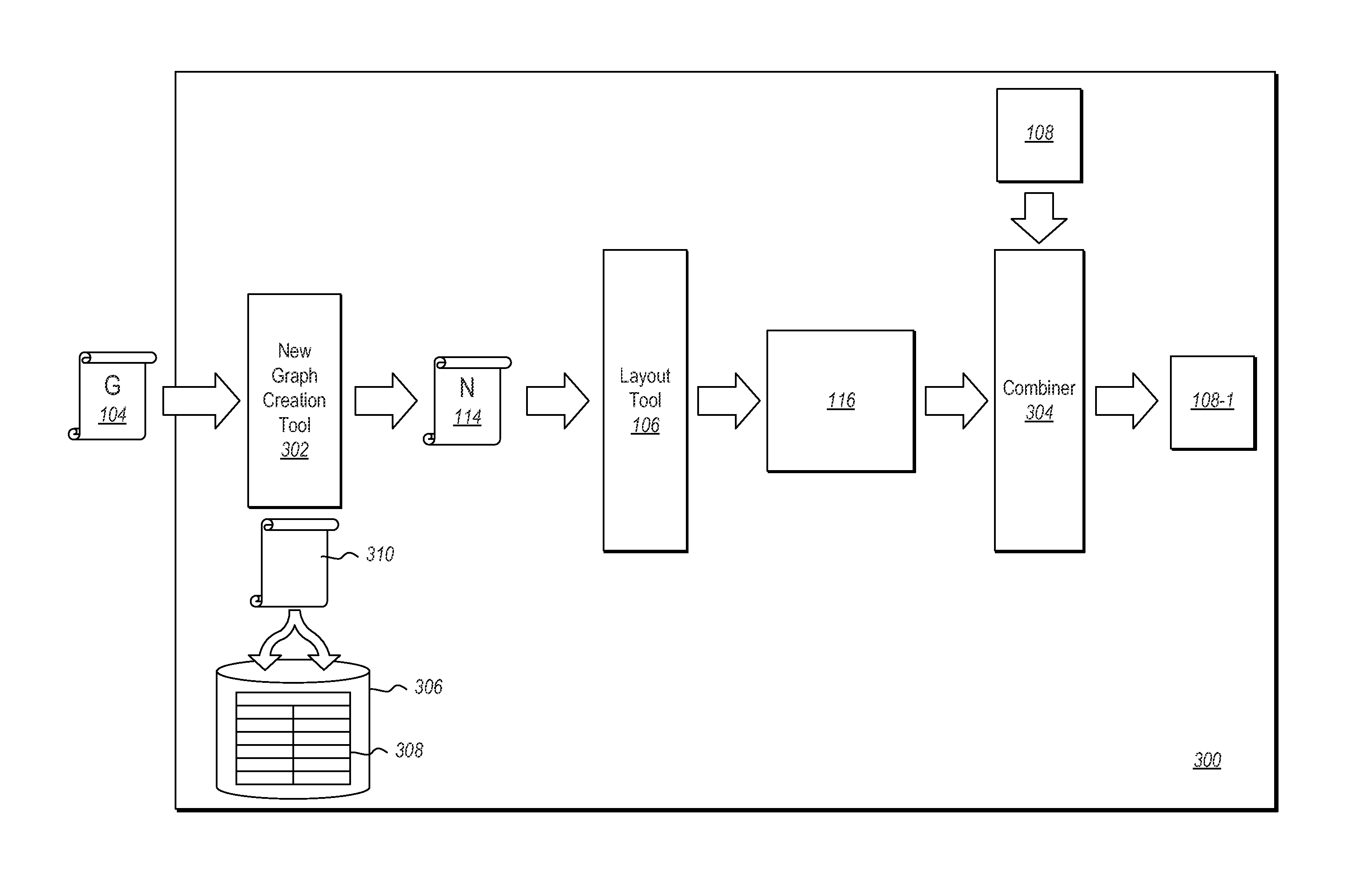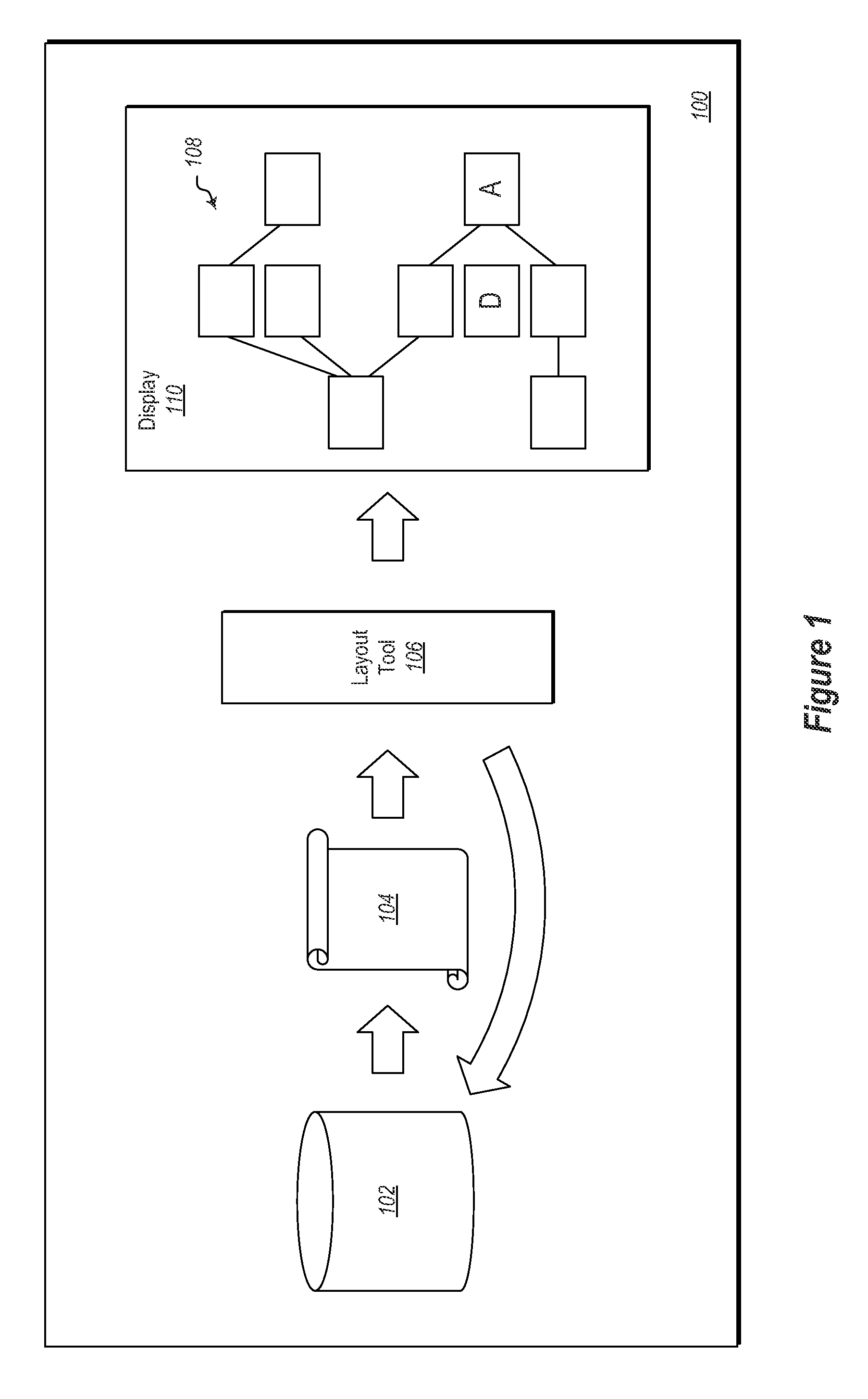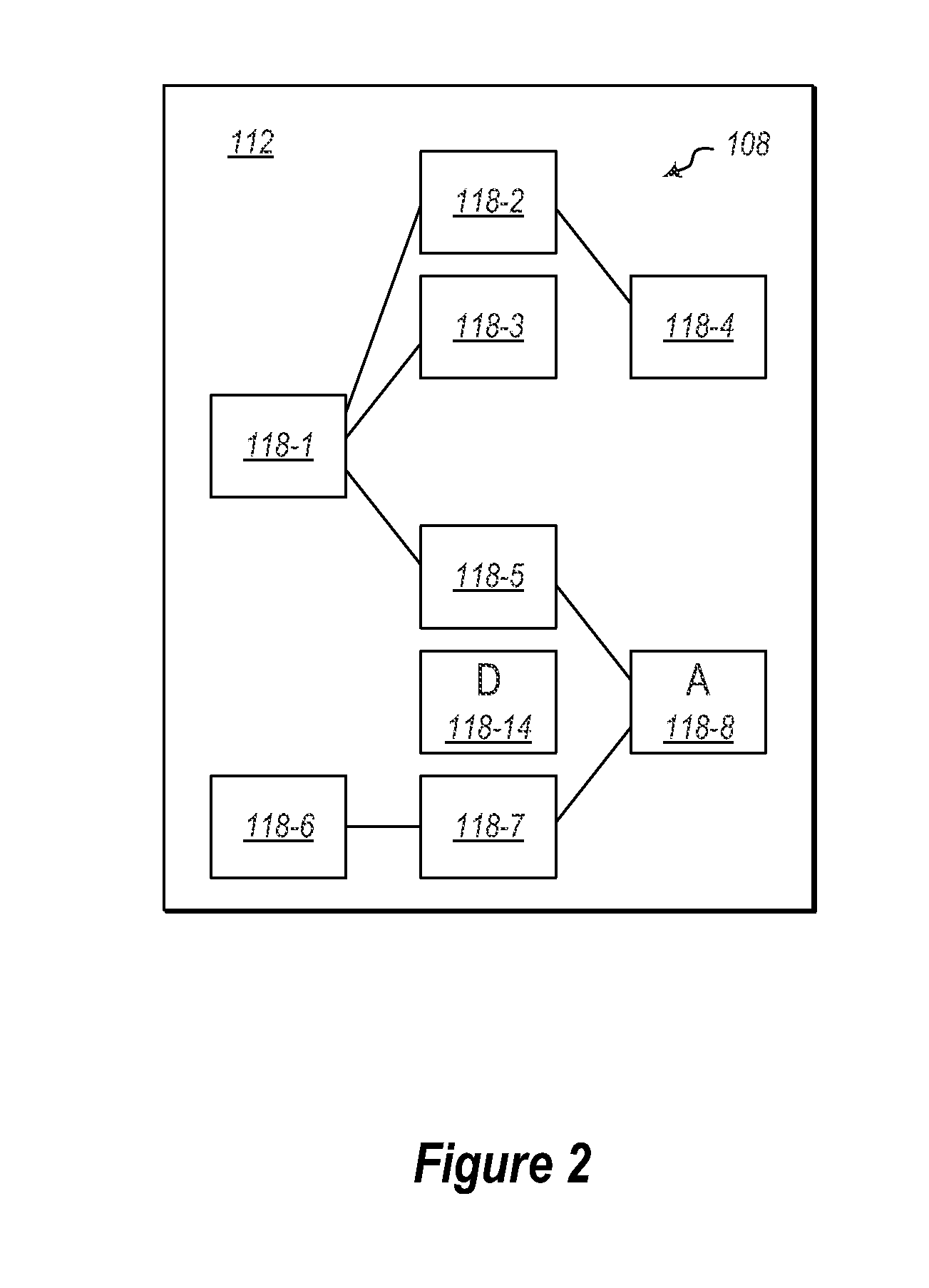Incremental Automatic Layout of Graph Diagram for Disjoint Graphs
a graph diagram and graph diagram technology, applied in the field of increasing automatic layout of graph diagrams for disjoint graphs, can solve the problems of negating user's time investment, difficult to maintain visual context for users, and user will invest a lot of time in getting the layou
- Summary
- Abstract
- Description
- Claims
- Application Information
AI Technical Summary
Benefits of technology
Problems solved by technology
Method used
Image
Examples
Embodiment Construction
[0023]There exist a number of different systems for doing automated layout of complete graph diagrams. Embodiments of the invention can make use of these existing systems to perform automated incremental layout of graph diagrams of one or more new nodes to be added to a graph diagram. Thus, the automated layout is applied to the new nodes without re-laying out existing nodes in the graph diagram. The new nodes can then be added to the graph diagram with the automatic layout being used to position the nodes so that they are well positioned, but without needing to significantly move existing nodes in the graph diagram. This solves a problem related to maintaining visual context of graph diagrams by using automated layout systems to create well placed portions of a new graph diagram and then using layout tools to incrementally add the new graph diagram to an existing graph diagram such that the new graph diagram is added while still maintaining visual context for the previous graph dia...
PUM
 Login to View More
Login to View More Abstract
Description
Claims
Application Information
 Login to View More
Login to View More - R&D
- Intellectual Property
- Life Sciences
- Materials
- Tech Scout
- Unparalleled Data Quality
- Higher Quality Content
- 60% Fewer Hallucinations
Browse by: Latest US Patents, China's latest patents, Technical Efficacy Thesaurus, Application Domain, Technology Topic, Popular Technical Reports.
© 2025 PatSnap. All rights reserved.Legal|Privacy policy|Modern Slavery Act Transparency Statement|Sitemap|About US| Contact US: help@patsnap.com



